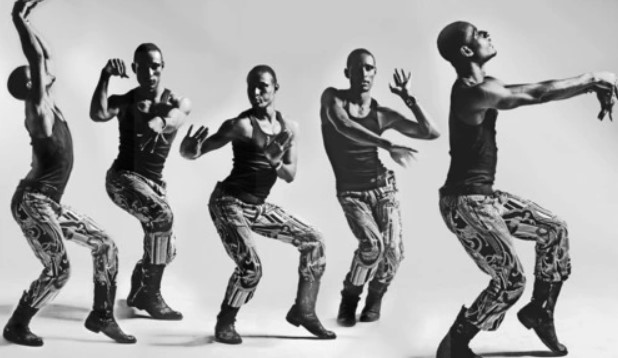Tutting Dance Definition, History & Move
People’s creativity tends to be sparked when it comes to Ancient Egypt. From tall monuments and mystical mummies to thousand-year-old secrets, the bygone civilization still has a magic that draws us to it.
The tutting dance is a beautiful celebration of Egyptian history and culture. This mesmerizing dance style involves angling and shaping your body, moving your hands and fingers in intricate movements that mimic the geometrical patterns of the Egyptian pharaohs.
While on the surface, it may seem like it’s a modern invention (it only became popular in the 70s and 80s,) the roots of the dance can actually be traced back to Ancient Egypt.
In today’s article, we’ll tell you where the tutting dance originated from, and the people behind it!
Tutting Dance Definition: What Is Tutting Dance?
Before we get to the origins of Tutting dance, for those unfamiliar with it, let’s talk about what it is first.
The word “tutting” is believed to have come from the name of an Egyptian pharaoh, Tutankhamen (or King Tut.)
In the tutting dance, the dancers create intricate shapes with their arms and hands. Usually, these shapes resemble those found in ancient Egyptian hieroglyphics. The motions can include bending and extending the fingers, the wrists, and the arms in precise angles and positions, like a 90° angle.
That’s not all, though. Tutting dancers often incorporate other dance styles, such as popping and locking, into their routines.
The dance is usually performed to music with a slow tempo to give the dancer plenty of time to emphasize the shape of their body and the smoothness of their movements to the audience. The sharp angles of the moves also highlight the flexibility of the dancer’s body.
As a result, even though it may look easy, the dance actually requires a lot of skill and practice to pull off prettily and safely!
A small disclaimer, though: despite looking like a folk dance, tutting is a street dance commonly associated with hip-hop. Its roots (which we’ll talk about later) indeed came from Ancient Egypt, but don’t mistake it for an ancient Egyptian dance!
Tutting vs Voguing
Tutting and voguing may look similar on the surface, but they’re two completely different dance styles!
The characteristic of the tutting dance is that it highlights the ability of the dancer to execute technically-tricky, sharp movements with their body. It’s also done in a controlled way, with each move being carefully choreographed beforehand.

Meanwhile, voguing focuses more on the drama element of the dance. Unlike the rigid geometry of tutting, voguing dancers have to make graceful, smooth movements on the dance floor. Voguing also gives the dancers a lot more leeway when it comes to improvisation compared to tutting.
And last but not least, there’s the difference in the venue, too. Tutting is mostly a hip-hop-style street dance. On the other hand, voguing is more of a ballroom dance. It was really in vogue (get it?) during the 1980s in the ballroom scene in NYC.
Check more: Where Did The Fandango Dance Originate
Tutting Dance Origin & History
Although tutting itself is a modern creation, the roots of this dance can be traced back to ancient Egyptian civilization.
The pharaohs of Egypt were known for their elaborate hand gestures and postures, which were depicted in hieroglyphics (wall writings) and other forms of art. These gestures and postures were used to communicate ideas, words, and concepts – almost like sign language!
But tutting didn’t come from ancient Egypt. Rather, it only took inspiration from it.
Tutting first appeared in the street dancing scene in the mid-170s and early 1980s. Although to whom the title of the “inventor” of tutting belongs is still heavily debated today, most sources agree that the earliest (or one of the earliest) person to perform the tut is Mark Benson (King Boogaloo Tut.)
Benson was only 15 years old when he saw Boogaloo Sam, the founder of the Electric Boogaloos, dancing in MacArthur Park in Long Beach, California. He was inspired to join the Electric Boogaloos and stand out by creating a unique style.
According to Benson, the inspiration for the tutting dance came to him after watching an episode of Batman featuring the villain King Tut. He was charmed by the poses and gestures that the villain would do and realized quickly that it could turn into a pretty nice popping dance.
Benson started experimenting and choreographing … eventually leading to the tutting dance that we all know and loved today.
In 1979, Benson choreographed The Street Scape, which became a hit and propelled him to international fame. He’s now made several appearances on popular TV shows that buoyed his reputation even further: So You Think You Can Dance, America’s Best Dance Crew, America’s Got Talent … you name it!
But over time, the tutting dance further evolved and became more complex than what Benson set out with.
People started to incorporate elements of other dance styles and today, on social media platforms such as YouTube and TikTok, you can see dancers blending tutting into their choreographies all the time.
Read more: https://citydance.org/where-did-the-tutting-dance-originate/
Nhận xét
Đăng nhận xét